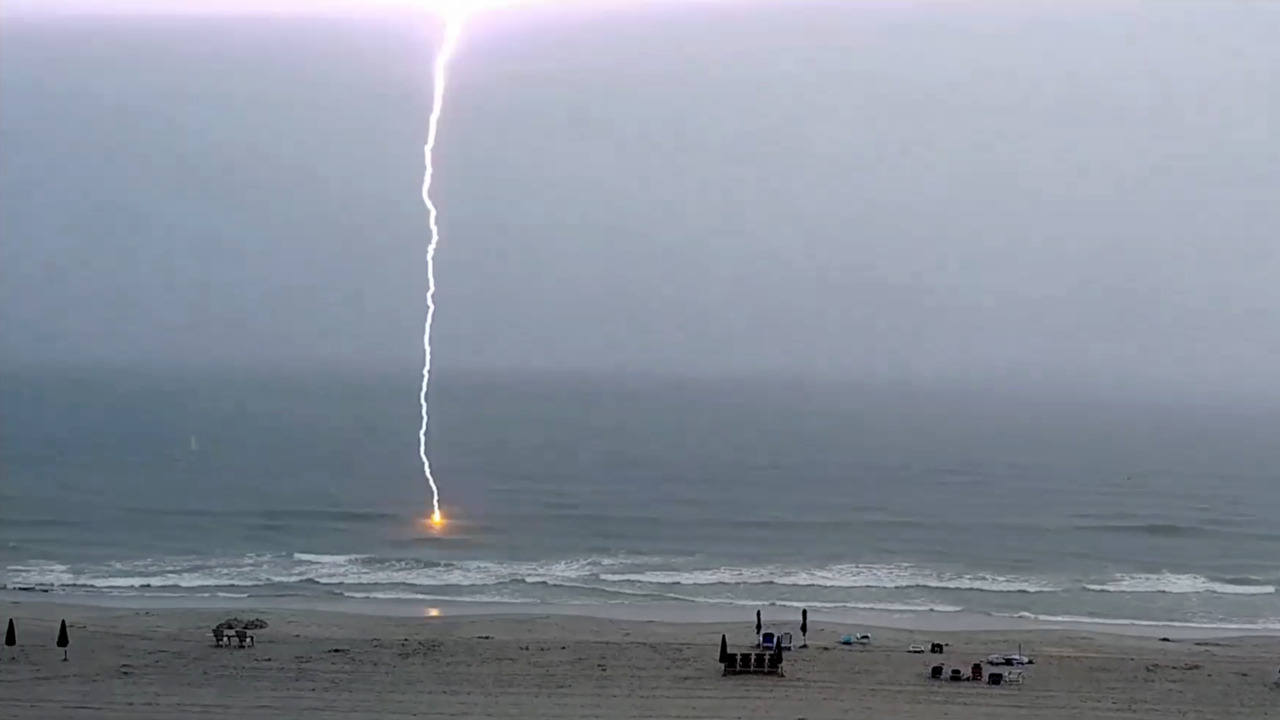Another Tragic Maritime Disaster in Indonesia

Introduction
Indonesia, a popular tourist destination, has been hit with yet another maritime disaster. On July 2nd, a ferry carrying 53 passengers and 12 crew members sank off the coast of Bali, leaving dozens missing. The incident has sparked concerns and highlighted safety issues in the country's transportation system.
Background
The ferry was en route to Bali from Java island when it encountered rough sea conditions and strong winds. The boat, named the "Ratu Laut," was a traditional wooden ship commonly used for transportation between the two islands. However, these types of vessels have been involved in several accidents in recent years, leading to calls for stricter safety regulations.
Current Scenario
The search and rescue operation is currently underway, with authorities using boats and helicopters to try and locate the missing passengers. So far, only seven survivors have been found, with one reporting that the boat began to take on water and sink due to the rough sea conditions. The Indonesian Navy and National Search and Rescue Agency have both been deployed to assist in the search efforts.
This incident has once again raised concerns about the safety of maritime transportation in Indonesia. In 2018, a ferry disaster claimed the lives of more than 100 people, leading to a government crackdown on unsafe vessels. However, it seems that more needs to be done to prevent these tragedies from occurring.
Conclusion
The sinking of the "Ratu Laut" ferry is yet another tragic event in Indonesia's history of maritime disasters. The country has been working to improve safety regulations and prevent accidents, but it is clear that more needs to be done. As the search and rescue operation continues, let us hope for the best and that the missing passengers are found safely. A thorough investigation must be conducted to uncover the cause of this tragedy and ensure that similar incidents do not happen in the future.
About the Organizations Mentioned
Indonesian Navy
## Overview The Indonesian Navy, officially known as Tentara Nasional Indonesia Angkatan Laut (TNI-AL), is the naval branch of Indonesia’s National Armed Forces and is responsible for safeguarding the nation’s vast maritime domain, which spans one of the world’s largest archipelagos[1]. Its primary missions include patrolling Indonesia’s lengthy coastline, enforcing maritime law, securing the Exclusive Economic Zone (EEZ), protecting strategic maritime interests, defending against seaborne threats, supporting diplomatic efforts, and empowering civilians in sea defense[1][2]. ## History The Indonesian Navy traces its origins to August 22, 1945, just days after Indonesia’s declaration of independence, when it was established as the “Agency of the People’s Security Sea Service” (BKR Laut)[3][5]. Initially, the force was equipped with only a handful of wooden ships and former Japanese landing craft, reflecting the challenges of a nation emerging from colonial rule[5]. Over the decades, the navy evolved through several name changes—from BKR Laut to ALRI (Angkatan Laut Republik Indonesia), and finally to TNI-AL in 1970[5]. The 1970s and 1980s saw significant modernization, with acquisitions of advanced vessels and weapons systems from various countries, and the development of a domestic shipbuilding industry through PT PAL[3]. ## Key Achievements The Indonesian Navy has made notable strides in modernizing its fleet, including the acquisition of submarines (Cakra-class and Nagapasa-class), advanced surface combatants, and the development of local naval industries through technology transfer[4][6]. It operates three major fleets (Armada I, II, and III) and a Military Sealift Command, with a strong emphasis on maritime domain awareness and rapid response capabilities[1][2]. The navy has also played a critical role in regional security, participating in multinational exercises and anti-piracy operations. #
National Search and Rescue Agency
The **National Search and Rescue (SAR) Plan** of the United States is not an independent agency but rather a comprehensive framework that guides search and rescue operations across the country. It involves a collaborative effort among various federal agencies, including the Departments of Homeland Security, Defense, Transportation, Interior, Commerce, and State, along with the Federal Communications Commission and NASA[1][5]. The plan is overseen by the **National Search and Rescue Committee (NSARC)**, which coordinates and provides guidance for implementing the national SAR policy[5]. ## History and Purpose The NSARC was established after the National Search and Rescue Conference of 1973, recognizing the need for a permanent committee to oversee SAR operations. Initially known as the Interagency Committee on Search and Rescue (ICSAR), it was renamed NSARC in 1999[5]. The plan aims to reduce loss of life, property damage, and environmental harm by providing effective SAR operations across all hazards and regions[1]. ## Key Achievements A significant achievement is the integration with the **Cospas-Sarsat Program**, an international effort supported by NASA, which has developed technologies for satellite-aided distress location services. This has significantly enhanced the speed and effectiveness of SAR missions worldwide[2]. Additionally, the plan ensures the use of advanced technologies and coordination among agencies to respond to emergencies effectively[3]. ## Current Status The National SAR Plan continues to evolve with technological advancements and international collaboration. It remains a crucial component of the U.S. emergency response system, ensuring that SAR operations are efficiently managed across various regions, including maritime and inland areas[3][4]. ## Notable Aspects - **Coordination**: The plan involves multiple federal agencies working together to ensure comprehensive SAR operations. - **Technological Advancements**: The use of satellite-aided distress beacons and other technologies has improved response times and effectiveness. - **International Collaboration**: Participation in international programs like Cospas-Sarsat enhances global









